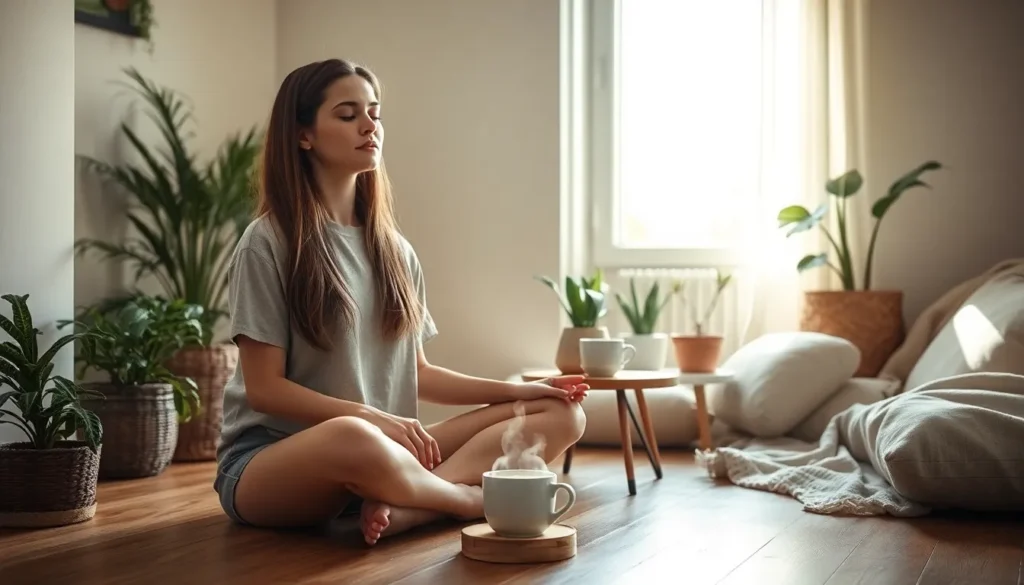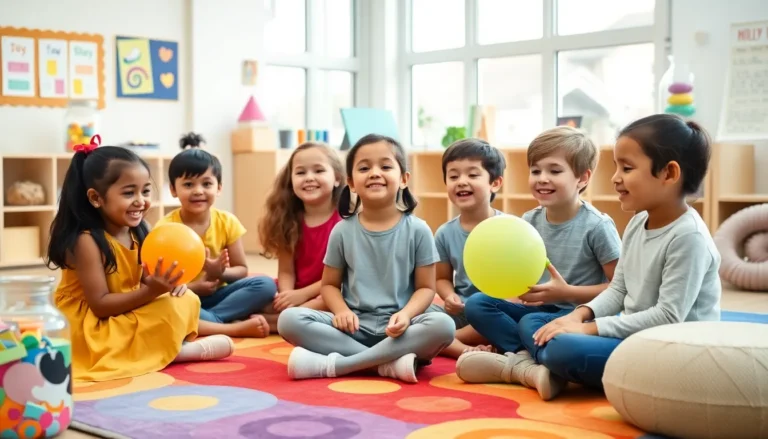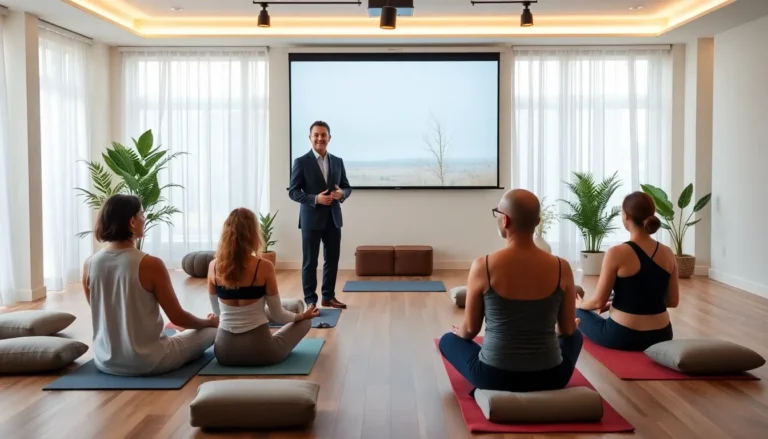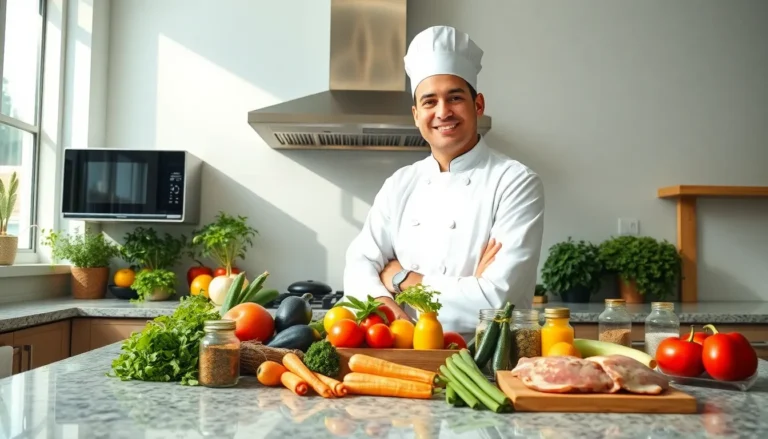Table of Contents
ToggleIn a world buzzing with distractions and endless to-do lists, finding a moment of peace can feel like searching for a needle in a haystack. But what if he told you that mastering mindfulness techniques could transform that chaos into calm? Picture this: instead of frantically scrolling through social media, he could be savoring the present moment like a warm cup of coffee on a chilly morning.
Overview of Mindfulness Techniques
Mindfulness techniques promote the practice of being present and aware in the moment. These methods foster emotional regulation and reduce stress. Several core techniques stand out for their effectiveness.
Breathing exercises serve as a foundational practice. Deep, intentional breathing calms the nervous system and anchors attention. This technique involves inhaling deeply through the nose, holding for a moment, then exhaling through the mouth.
Body scanning focuses on awareness of physical sensations. Practitioners start at the head and gradually move toward the toes, observing tension and relaxation. Such awareness enhances understanding of bodily cues.
Guided meditation offers structure and support. In this technique, individuals listen to recordings or live instructions that lead them through meditative experiences. Regular practice can deepen relaxation and clarity.
Mindful walking encourages awareness during movement. Participants concentrate on each step, feeling the ground beneath their feet. This method integrates physical activity with mindfulness.
Journaling promotes reflection and self-awareness. Writing thoughts and feelings allows for processing experiences and emotions. This practice can reveal patterns and insights over time.
Visualization involves imagining peaceful settings or positive outcomes. Mental imagery can reduce anxiety and boost motivation. Practicing this technique often enhances resilience.
Choosing the right mindfulness technique depends on personal preference and lifestyle. Exploring different approaches can help identify what resonates most. Each technique contributes uniquely to enhancing mindfulness and overall well-being.
Benefits of Mindfulness Techniques
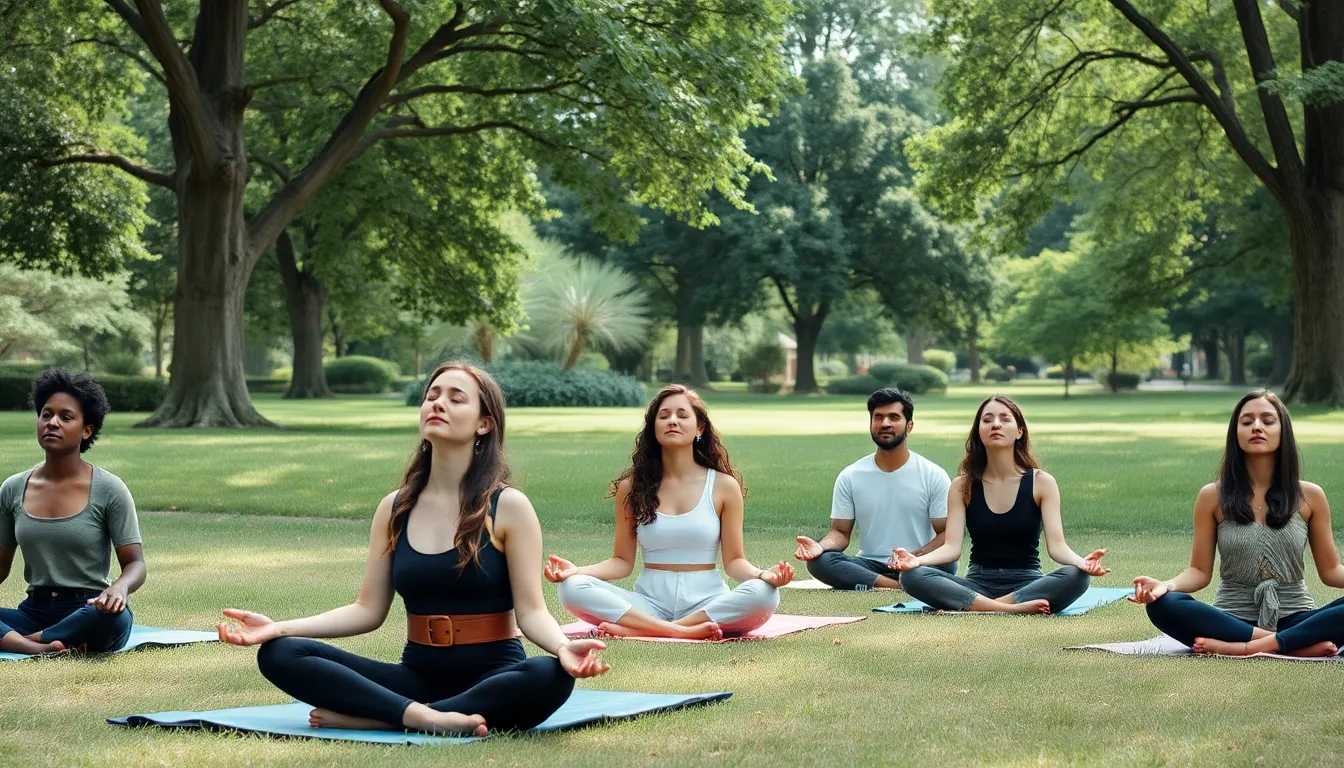
Mindfulness techniques offer various benefits that enhance mental and physical well-being. Individuals often experience significant improvements in several areas of their lives.
Mental Health Improvements
Practicing mindfulness reduces symptoms of anxiety and depression. Research indicates that regular mindfulness practice can increase emotional resilience. Stress management becomes easier with mindful awareness, allowing individuals to respond rather than react to challenges. Improved focus and concentration stem from the ability to stay present, benefiting both work and personal relationships. Enhanced self-awareness also develops, leading to better emotional regulation. Participants in mindfulness programs often report greater overall satisfaction and happiness.
Physical Health Enhancements
Mindfulness enhances physical health by lowering blood pressure and improving heart health. Studies show that consistent practice can lead to reduced chronic pain levels. Immune system function often improves, helping the body fend off illnesses. Increased energy levels arise from decreased stress, contributing to a more active lifestyle. Better sleep quality results from the relaxation cultivated through mindfulness practices. Participants frequently report healthier eating habits, promoting overall well-being through mindful choices.
Popular Mindfulness Techniques
Various mindfulness techniques provide practical ways to cultivate presence and awareness. Each technique offers unique benefits, allowing individuals to find a method that best suits their lifestyle and preferences.
Meditation Practices
Meditation practices focus on quieting the mind and enhancing self-awareness. Techniques like guided meditations and transcendental meditation allow individuals to develop a deeper connection with themselves. Many people find that regularly practicing meditation improves emotional regulation and reduces stress. Furthermore, even short sessions of five to ten minutes can lead to significant positive outcomes in mental clarity and emotional well-being.
Breathing Exercises
Breathing exercises play a crucial role in mindfulness techniques. Focusing on breathing helps individuals ground themselves in the present moment. Techniques such as box breathing or diaphragmatic breathing reduce anxiety and promote relaxation. Practicing these exercises regularly enhances lung capacity while fostering a sense of calm. Individuals often notice improvements in their overall mood and stress levels after incorporating these practices into their daily routines.
Body Scan Techniques
Body scan techniques encourage awareness of physical sensations and tension throughout the body. Participants typically lie down or sit comfortably, systematically directing their attention to different body parts. This method helps individuals identify areas of tension, promoting relaxation and mindfulness. Many find that practicing body scans enhances their ability to manage stress and increases their connection to their own physical experiences. Regular engagement with body scans fosters a greater understanding of the mind-body connection.
Incorporating Mindfulness Techniques into Daily Life
Incorporating mindfulness techniques into daily routines enhances focus and promotes overall well-being. The following practices support the transition into a more mindful lifestyle.
Setting Time Aside
Carving out time for mindfulness fosters consistency. Allocating as little as five minutes daily can lead to long-term benefits. Morning routines often work well for many individuals, providing a peaceful start to the day. Evening sessions also help reflect and unwind. Utilizing a calendar app can ensure reminders for mindfulness practices. Participants often find that setting specific times helps establish a habit. Regular practice deepens the connection to mindfulness, leading to improved emotional resilience and clarity.
Creating a Mindfulness Space
Establishing a designated mindfulness space cultivates a conducive environment. Choosing a quiet corner can enhance focus and relaxation. Personalizing this space with calming elements, such as plants or soft lighting, promotes tranquility. Incorporating comfortable seating arrangements encourages prolonged practice. Moreover, minimizing distractions by silencing devices helps maintain presence. Regularly returning to this space reinforces commitment to mindfulness techniques. Participants frequently report increased comfort and relaxation when returning to their tailored mindfulness areas.
Embracing mindfulness techniques can significantly enhance one’s quality of life. By dedicating time to practices like meditation and breathing exercises, individuals can cultivate a sense of peace amidst daily distractions. The flexibility of these techniques allows everyone to find their unique approach, making mindfulness accessible to all.
As individuals integrate these practices into their routines, they’re likely to experience improved mental clarity and emotional well-being. With consistent effort even small daily sessions can lead to profound changes. Creating a mindful environment further supports this journey, encouraging deeper engagement with the present moment. Mindfulness isn’t just a practice; it’s a pathway to a more fulfilling and balanced life.

